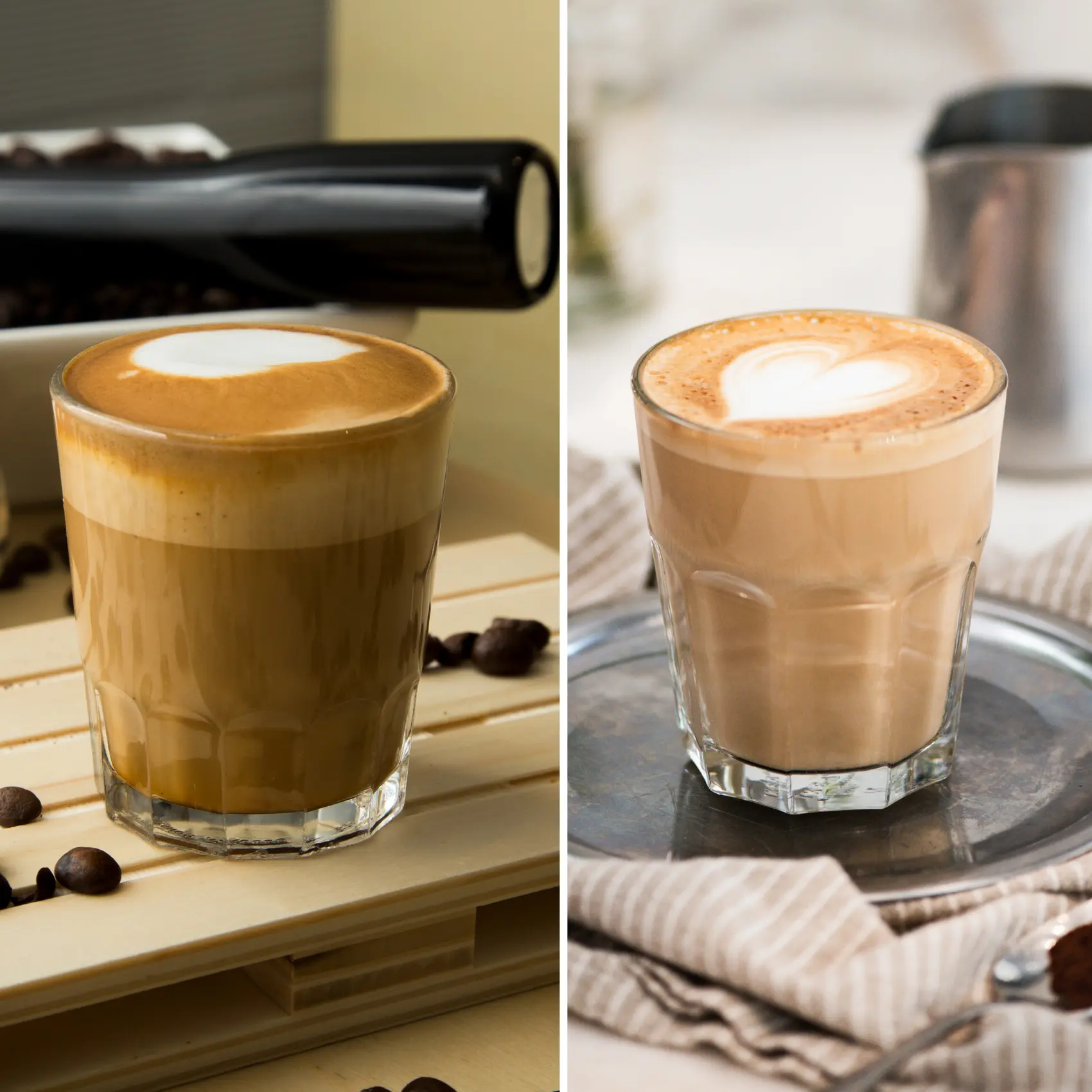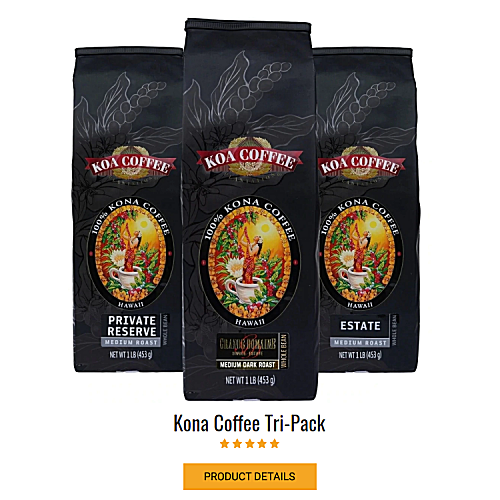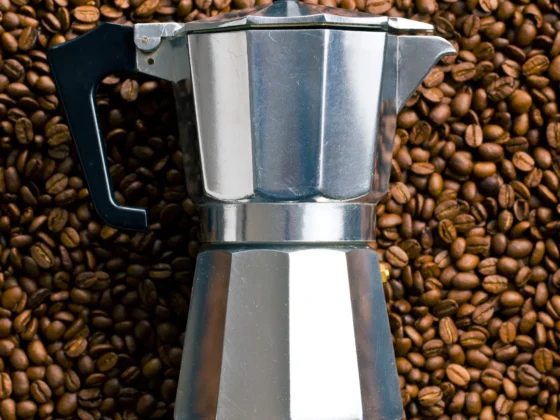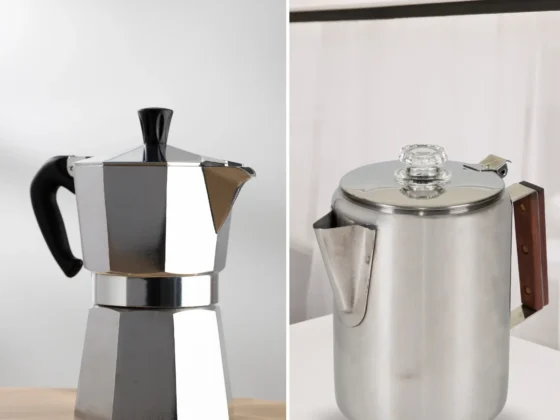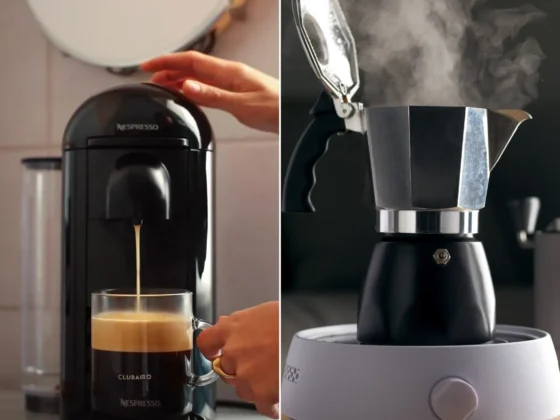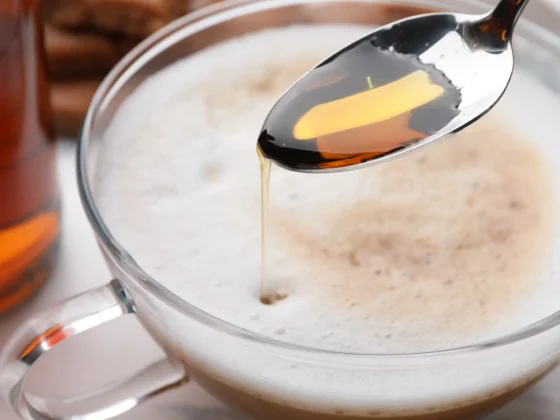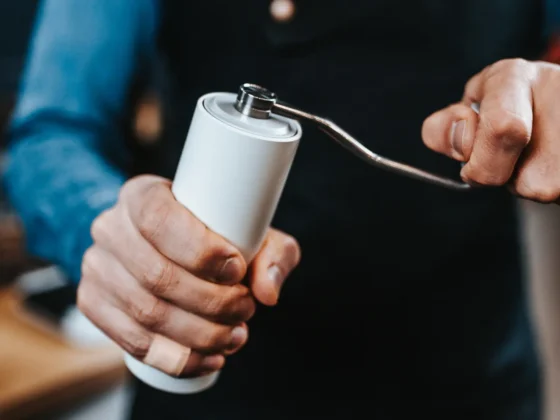In the ever-evolving world of coffee, the battle for supremacy between various espresso-based drinks has been an ongoing and delightful dance. Among the contenders, two beverages often draw curious glances and passionate discussions: the Cortado and the Flat White. While to a casual observer, these drinks might appear deceptively similar, for true coffee aficionados, each sip reveals layers of distinction. “Cortado vs. Flat White: A Deep Dive into Espresso Favorites” promises to journey through the nuances, origins, and characteristics that set these two apart. Whether you’re a seasoned barista, a coffee enthusiast, or someone simply looking to expand your coffee knowledge, this exploration aims to shed light on the unique charm of both these espresso legends.
Don’t feel like reading? Listen to this article below
- Introduction & Key Takeaway
- https://app.mysoundwise.com/tracks/16973049700409561e.mp3
- Origins and History
- https://app.mysoundwise.com/tracks/16973050631878145e.mp3
- Flavor Profiles
- https://app.mysoundwise.com/tracks/16973053512870620e.mp3
- Brewing Techniques
- https://app.mysoundwise.com/tracks/16973054294483167e.mp3
- Cultural Influences
- https://app.mysoundwise.com/tracks/16973054853317766e.mp3
- Personal Preferences
- https://app.mysoundwise.com/tracks/16973055640429390e.mp3
- Conclusion & FAQs
- https://app.mysoundwise.com/tracks/16973056363839099e.mp3
Flat White vs. Cortado: Key Takeaway
- Origins Matter: While both drinks have espresso at their core, Cortados find their roots in Spain, while Flat Whites trace back to Australia and New Zealand.
- Texture Tells a Tale: Cortados offer a blend of espresso and warm milk without the froth, presenting a straightforward taste profile. In contrast, Flat Whites introduce microfoam, leading to a creamier mouthfeel.
- Size and Strength: Both beverages may look similar in size, but the Flat White typically offers a more robust coffee flavor due to its higher espresso-to-milk ratio.
- Cultural Significance: Beyond taste and texture, each drink reflects the coffee culture of its place of origin, with Cortados epitomizing Spanish simplicity and Flat Whites representing the modern coffee movement in the Southern Hemisphere.
- Personal Preference Reigns: At the end of the day, choosing between both beverages is a matter of personal taste. Both drinks, with their unique characteristics, offer a distinct espresso experience for coffee lovers.
Cortado vs. Flat White: Origins and History
Delving into the intricate world of coffee often leads enthusiasts on a historical journey to understand the roots of their favorite brews. Knowing what is a cortado coffee or what is a flat white not only deepens one’s appreciation of the drink but also provides a cultural and historical perspective.
What is a Cortado?

The cortado, characterized by its unique blend of espresso and nearly equal parts of warm milk, traces its origins back to Spain, specifically the vibrant streets of Madrid. The name “cortado” springs from the Spanish verb “cortar,” which means “to cut,” suggesting the idea of diluting or tempering the strong flavor of espresso with milk. While various interpretations of the cortado exist worldwide, the core essence remains consistent: a strong coffee “cut” or balanced with milk. (1)
- Spain and Its Variations: The “café cortado,” essentially an espresso mixed with a touch of milk, can be equated to beverages like the Italian “macchiato” or the French “noisette.” However, in Spain, the term embodies a range of coffee drinks that have been mixed or “cut” with milk.
- The Cuban Cortadito: In Cuba, the cortado takes on a sweet twist in the form of the “cortadito,” which blends espresso with sweetened condensed milk, owing to the historical scarcity of fresh milk in the region. This rich variant, having migrated to Miami, has since become a staple in Cuban-American communities.
- International Interpretations: Globally, the cortado has been embraced and adapted. In the U.S., particularly the East Coast, it’s typically known simply as a “cortado.” Meanwhile, in San Francisco, the “gibraltar” iteration, named after the type of glassware used, gained popularity, bringing with it a precise milk-to-coffee ratio and unique temperature and texture.
What is a Flat White?

The flat white, a harmonious union of espresso and velvety microfoam, has roots in both Australia and New Zealand. While its name can be traced back to the 1960s UK, the modern interpretation of the drink, as we know it today, was developed in the coffee-loving cultures of Australia and New Zealand. (2)
- Characteristics: The defining features of this lovely beverage are its double espresso base complemented by steamed milk, resulting in a drink with a thin layer of delicate microfoam. This contrasts with the thicker foam layers found in cappuccinos or the milkier consistency of lattes.
- Australasian Origins: While the term “flat white” appeared as early as the 1960s in the UK, the brew gained significant traction in the 1980s in Australia, with various cafes claiming its introduction. Similarly, New Zealand has its tales of the drink’s inception, including stories of “failed cappuccinos” turning into the first flat whites.
- Texture and Taste: This drink’s distinct milk texture and its potent coffee flavor, thanks to the smaller serving size compared to a latte, sets it apart. While the exact recipes might differ from one cafe to the next, the consistency of the milk and the richness of the coffee are paramount.
Historical Significance of Espresso Drinks
The cultural significance of espresso-based beverages like the cortado and flat white cannot be overstated. From the bustling streets of Madrid to the cafes in Sydney, these drinks represent more than just coffee. They’re a blend of tradition, innovation, and community, carrying with them stories of migration, adaptation, and the universal love for a good cup of joe. Their evolution and widespread popularity underscore the global community’s shared appreciation for quality and flavor, proving that, despite regional variations, the love for coffee is universal
Cortado vs. Flat White: Flavor Profiles

The exploration of coffee varieties often leads enthusiasts down a delightful rabbit hole of flavors, textures, and aromatic experiences. When it comes to dissecting the nuanced differences between coffee drinks, the debate of “cortado vs flat white” is a popular topic. Both beverages boast unique flavor profiles rooted in the coffee-to-milk ratio and preparation techniques. While they may seem similar to the untrained palate, their differences become discernible when scrutinized.
Cortado’s Bold Simplicity
The cortado stands as a testament to the beauty of minimalism in the coffee world. With a straightforward combination of espresso and milk, it captures the essence of robust coffee flavors balanced by a touch of creaminess.
- The essence of Cortado: At its core, a cortado is an espresso cut with a small amount of warm milk. As previously mentioned, the word “cortado” is derived from the Spanish verb “cortar”, meaning “to cut”.
- Milk-to-Coffee Ratio: Typically, a cortado maintains a 1:1 ratio of espresso to milk. This balance allows the robust flavors of the espresso to shine through while being slightly mellowed by the milk.
- Flavor Profile: The cortado delivers a bold and straightforward coffee experience. The milk mitigates the espresso’s acidity without overshadowing its rich, intricate flavors.
Flat White’s Creamy Smoothness
Hailing from the shores of Australia and New Zealand, this coffee has become a global favorite for those seeking a harmonious blend of strong espresso and velvety milk. Its defining microfoam texture sets it apart, offering coffee enthusiasts a uniquely smooth experience.
- Origins: The flat white coffee, originating from Australia and New Zealand, has garnered global appreciation for its delicate equilibrium of coffee strength and milky smoothness.
- Microfoam Mastery: The signature characteristic of this drink is its velvety microfoam. Unlike the thick froth of a cappuccino, this beverage’s foam is thinner, creating a creamier texture when sipped.
- Flavor Dynamics: Due to the higher milk-to-espresso ratio compared to a cortado, this coffee delivers a smoother and more diluted coffee taste. The microfoam introduces a luxurious mouthfeel and a rounded, milky sweetness that complements the underlying espresso notes.
How Roast Levels Affect Flavor
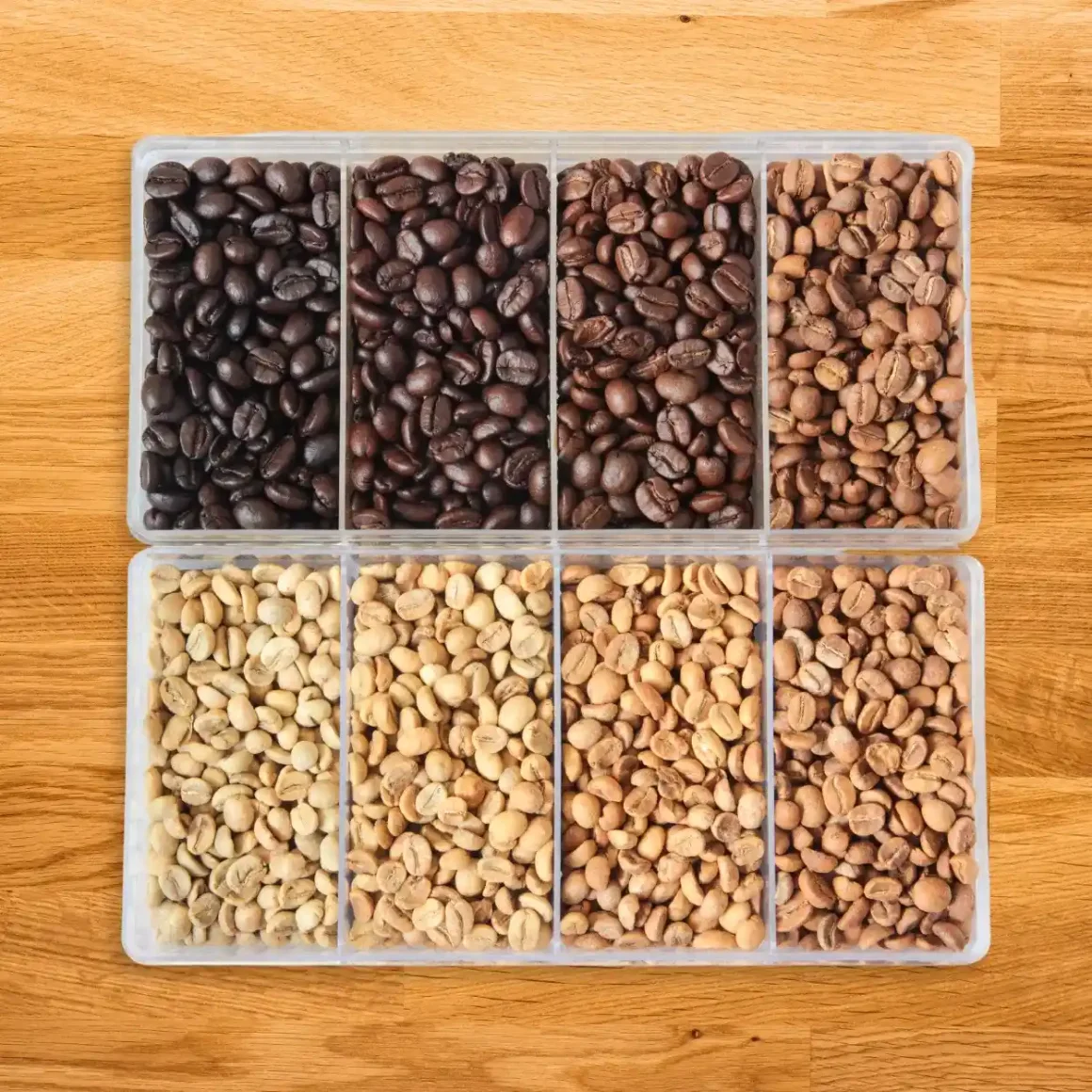
The roast level of coffee beans plays a pivotal role in determining the final flavor profile of any coffee-based beverage. Whether it’s a light, medium, or dark roast, each brings its distinct characteristics to the table, influencing the taste and aroma of drinks like the cortado and flat white.
- Spectrum of Roasts: Coffee beans can be roasted to various levels, ranging from light to dark. Each roast level imparts distinct flavor profiles, influencing the taste of the final brew.
- Light Roasts: These beans are roasted for a shorter period, preserving many of the original coffee bean characteristics. Light roasts lend brighter, fruitier, and more acidic notes when used in beverages like cortado or flat white.
- Medium Roasts: Offering a balance between the bean’s inherent flavors and the nuances from roasting, medium roasts introduce more body and reduced acidity. This roast level can add depth and richness to both beverages.
- Dark Roasts: These beans undergo a longer roasting process, producing bold, smoky, and sometimes chocolaty or caramel undertones. When used in a cortado or flat white, the coffee’s strong flavors can dominate, making it imperative to balance with the milk to achieve the desired taste profile.
Cortado vs. Flat White: Brewing Techniques
In the realm of coffee, mastering brewing techniques is paramount to extracting the optimal flavors from your beans. When you delve into specialized drinks, knowing the art and science behind each brew can transform a regular coffee routine into a gourmet experience. Whether you’re figuring out how to make a cortado or how to make a flat white, the preparation process is as important as the ingredients themselves.
How to Make a Cortado

The cortado, a harmonious blend of espresso and milk, is beloved for its bold simplicity. Making it requires precision to ensure a balance that highlights the coffee’s depth without overwhelming milkiness.
- Espresso Extraction: Begin by pulling a double shot of espresso. Ensure the coffee is freshly ground to a fine consistency, and the shot is extracted between 25-30 seconds for optimal flavor.
- Warm the Milk: Heat a small amount of milk, avoiding excessive frothing. The goal is to have slightly textured milk without prominent foam.
- Combine: Pour the warm milk over the espresso, maintaining roughly a 1:1 ratio. The resulting drink should be bold, with the milk’s creaminess slightly tempering the coffee’s robustness.
How to Make a Flat White
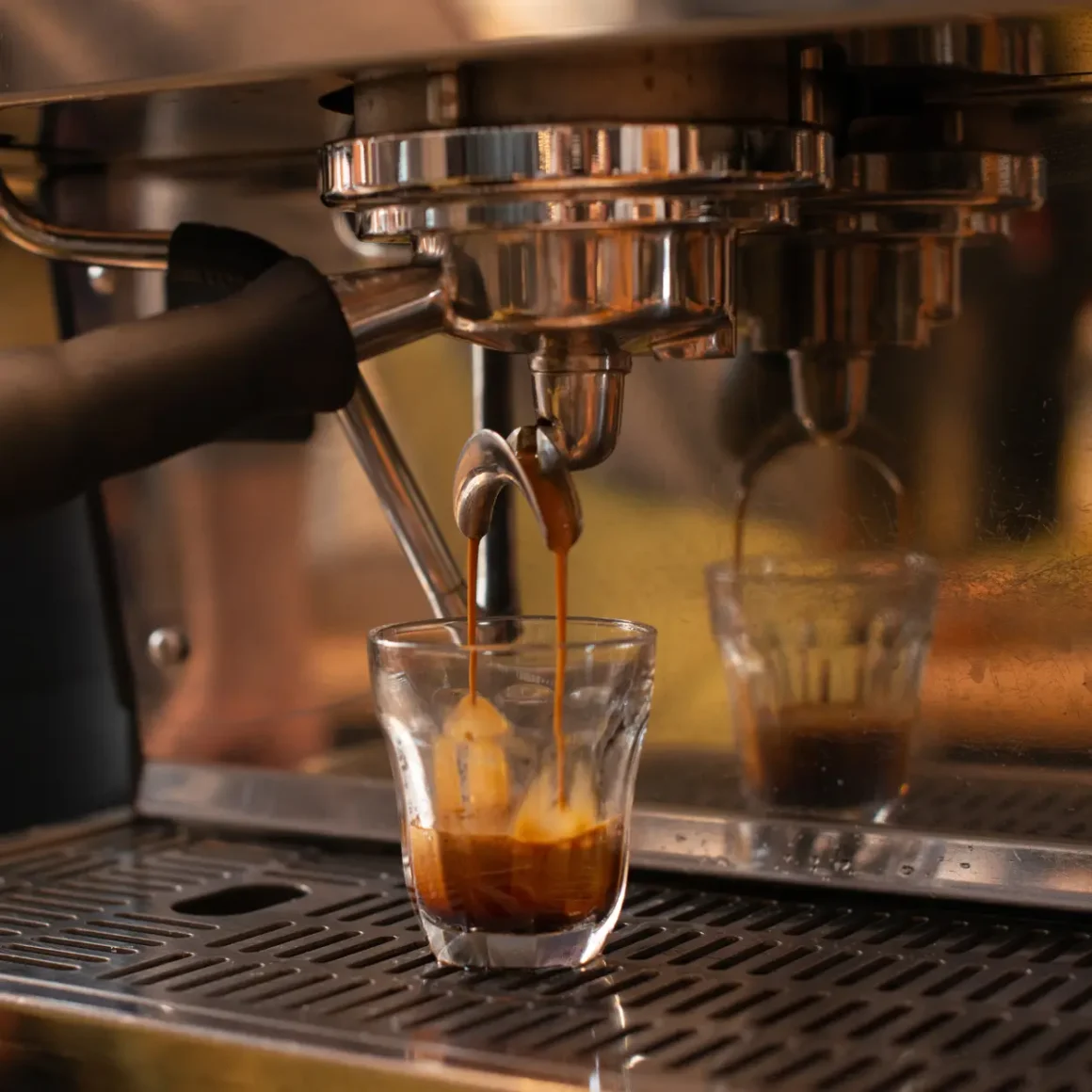
A cousin to the cortado, the flat white is distinctive in its creamy consistency and the microfoam that defines its texture.
- Espresso Base: Like the cortado, start with a double shot of espresso. The foundation should be strong to balance the milk that will be added.
- Microfoam Magic: The crux of a flat white lie in its milk texture. When steaming, aim to create microfoam – a silky, glossy milk where the foam is finely integrated, giving it a paint-like consistency.
- Pour with Precision: With a steady hand, pour the microfoamed milk over the espresso, ensuring the creamy milk seamlessly blends with the coffee. The final result should be smooth, velvety, and rich.
Steaming Milk to Perfection
No matter the coffee type, the quality of steamed milk can make or break the experience. Steaming milk to perfection requires attention to temperature, texture, and technique.
- Temperature Control: Milk should be steamed to around 150°F (65°C). Overheating can lead to a scalded taste, whereas underheating won’t release the milk’s natural sweetness.
- Aerate Properly: Introduce air into the milk by positioning the steam wand near the surface at the start. For microfoam, minimal aeration is required, creating tiny, uniform bubbles throughout.
- Swirl for Consistency: After steaming, swirl the milk in the pitcher to ensure an even texture. This action integrates the foam with the milk, creating a consistent, creamy consistency ready for pouring.
Cultural Influences
Diving deep into the cultural nuances of coffee reveals that it’s much more than just a beverage to kickstart your day. Espresso-based drinks, whether it’s a simple cappuccino coffee or something more niche like a cortado, often carry deep-rooted histories and values that showcase the rich tapestry of global coffee cultures.
Cortado’s Role in Spanish Coffee Culture
As previously mentioned, originating from the Spanish verb “cortar” meaning “to cut”, the cortado finds itself deeply entrenched in Spanish coffee culture. Historically, it was seen as a way to ‘cut’ the robustness of an espresso shot with a splash of milk, creating a harmonious blend that resonates with Spain’s emphasis on balance and simplicity.
- Symbol of Social Interaction: Like many coffee variants in Europe, the cortado is not just a drink but an experience. It’s typically enjoyed in quaint cafes or during afternoon breaks, fostering conversation and camaraderie.
- Variations Across Regions: While the essence of the cortado remains consistent throughout Spain, different regions have slightly varied takes on it, reflecting the rich diversity within the country itself.
- Integration with Daily Life: For many Spaniards, a cortado break is a staple, seamlessly integrating into their daily routines. It’s more than just caffeine—it’s a cherished moment of pause and reflection.
Flat White’s Popularity in Australia and Beyond
The flat white’s meteoric rise to fame in the world of coffee is a tale of innovation and cultural pride. From its humble origins in Australia and New Zealand, this delectable coffee drink has transcended borders, becoming a favorite for many across the globe.
- Australasian Pride: The debate between Australia and New Zealand over the true origin of this beverage showcases the immense cultural pride associated with this drink. Its preparation and presentation reflect the region’s passion for quality and perfection.
- Transition to the Global Stage: As travelers ventured to and from Australia, they brought back tales (and tastes) of this unique brew. This concoction quickly caught the attention of baristas worldwide, becoming a staple in many upscale cafes.
- Adaptation and Evolution: While the basic formula remains consistent, cafes from London to Los Angeles have incorporated their own twists to this lovely drink, underscoring coffee’s dynamic and adaptable nature.
Espresso Drinks in Global Coffee Communities

Espresso-based drinks like the cortado and flat white, alongside staples like cappuccino coffee, are testaments to coffee’s unifying power. Every culture adds its flavor, technique, and story to these drinks, making them rich tapestries of tradition and innovation.
- Global Language of Espresso: Regardless of where you are, ordering an espresso-based drink is almost like speaking a universal language. The techniques might vary slightly, but the essence remains consistent.
- Cafes as Cultural Hubs: Around the world, cafes serve as meeting points, workspaces, and even art platforms. The drinks they serve, especially espresso-based ones, play pivotal roles in fostering these communities.
- Reflection of Local Nuances: From the cortado in Spain to the cappuccino in Italy, these drinks often mirror local preferences, climates, and even historical events, offering a delicious glimpse into the culture they hail from.
Personal Preferences
Coffee drinking is a deeply personal experience, often molded by individual tastes, moods, and even memories. While some prefer the intense simplicity of an espresso, others lean towards the creamier delights of a latte or cappuccino. The choice between a cortado and a flat white, though seemingly subtle, can be a testament to one’s coffee preferences. Beyond just the choice of drink, personalization extends to the pairing of food with coffee, making the entire coffee experience a tailored pleasure.
Choosing Between Cortado and Flat White
The decision to opt for a cortado or a flat white can sometimes boil down to the nuances of milk-to-espresso ratios and the mouthfeel one desires.
- Milk-to-Espresso Ratio: A cortado, with its almost equal blend of espresso and warm milk, offers a balanced flavor where neither the robustness of the espresso nor the creaminess of the milk overshadows the other. In contrast, a flat white, with its microfoam and slightly greater milk presence, offers a creamier experience, ideal for those who want a gentler touch to their espresso.
- Texture: If you’re someone who relishes a smoother and silkier texture in their drink, the flat white microfoam might be more to your liking. On the other hand, a cortado offers a more superficial texture, with steamed milk that lacks the frothy characteristic of other espresso drinks.
- Intensity: For those seeking a slightly stronger coffee hit, the cortado’s balanced mix might be preferable, while the flat white, with its higher milk ratio, can be a milder choice.
Customizing Your Espresso Experience
In today’s world of coffee, customization is king. Baristas and coffee enthusiasts alike relish the opportunity to tweak and tailor their brews to exact specifications.
- Adjusting Ratios: Depending on personal preference, adjusting the espresso-to-milk ratio can transform the taste and feel of the drink. Some might opt for a touch more espresso for a bolder taste or a splash more milk for a milder palate.
- Experimenting with Milk: The type of milk used can alter the flavor profile. Options like almond, oat, or soy milk can add a unique twist to your cup of joe.
- Adding Flavors: Introducing syrups or flavorings, such as vanilla, caramel, or even spices like cinnamon, can elevate the espresso experience, making it truly personalized.
Paired Treats: What Goes Best with Each Drink
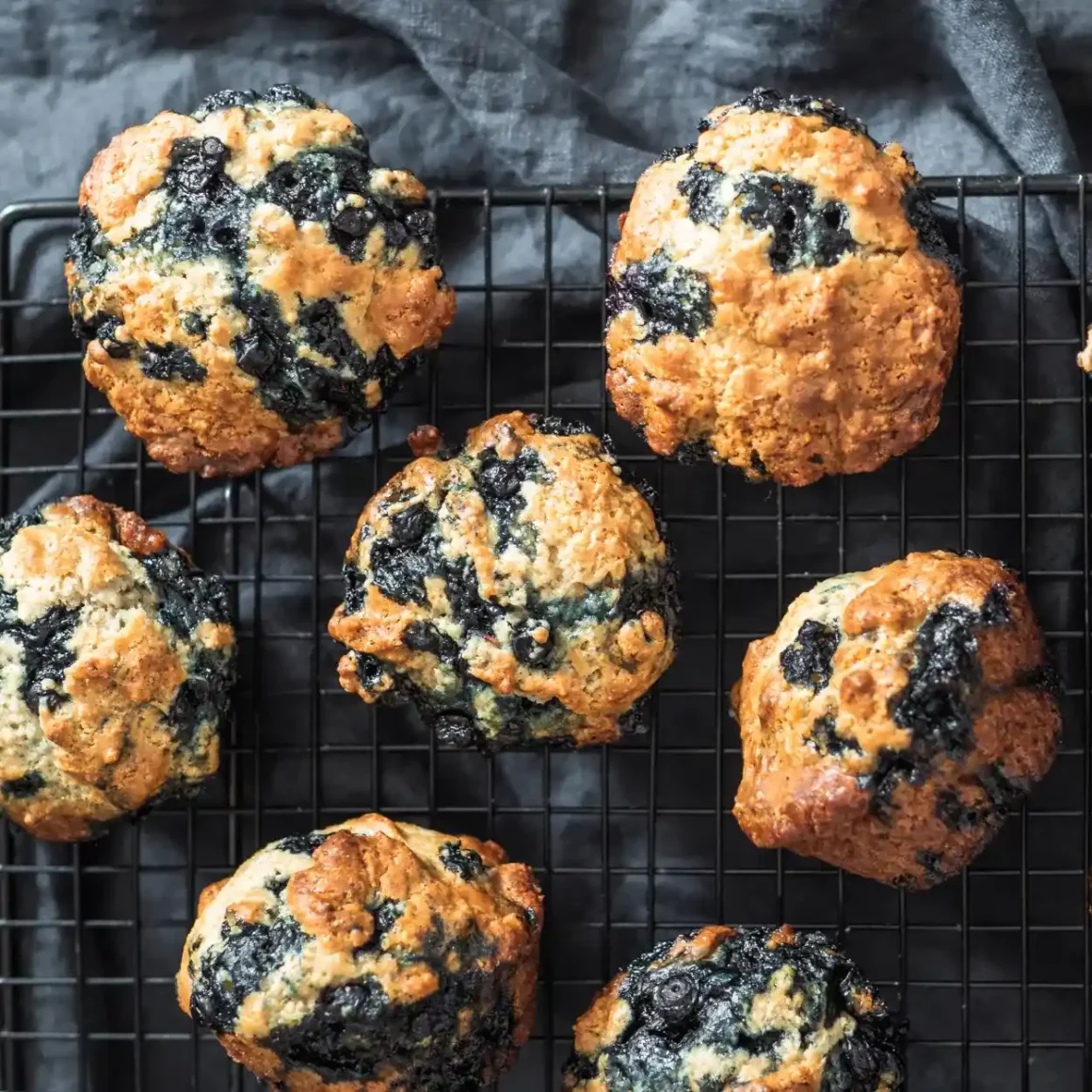
Pairing food with coffee is an art that can enhance the overall enjoyment of your brew. Depending on the coffee’s texture and flavor profile, different treats might complement it best.
- Cortado Companions: Given its bold yet balanced profile, the cortado pairs wonderfully with slightly sweet pastries like almond croissants or buttery biscuits. The simplicity of the cortado complements rich flavors without overwhelming them.
- Flat White Favorites: The creamier texture of this delightful coffee drink goes hand in hand with heartier treats. Think banana bread, blueberry muffins, or even a slice of rich chocolate cake. The milk’s creaminess can balance out and complement the richness of these snacks.
Flat White vs. Cortado: Conclusion
In the realm of coffee, understanding the subtle intricacies of each beverage can transform the ordinary act of sipping into a profound experience. Through our exploration of Flat White vs. Cortado, we’ve unveiled the nuances that make each drink unique and cherished by their respective admirers. As with many things in life, the preference between these two espresso favorites often boils down to personal taste. Whether you’re drawn to the bold simplicity of the Cortado or the velvety allure of the Flat White, it’s evident that both drinks hold a special place in the hearts of coffee enthusiasts worldwide. As you venture forth in your coffee journey, may each cup, be it Cortado or Flat White, bring a moment of delight and discovery.
FAQ
How did Cortado and Flat White originate?
Cortado originated in Spain, particularly Madrid, while the modern Flat White has its roots in Australia and New Zealand.
Which espresso drink is stronger, Cortado or Flat White?
Flat White typically has a more robust coffee flavor due to its higher espresso-to-milk ratio compared to a Cortado.
Can you make Cortado and Flat White at home?
Yes, both Cortado and Flat White can be made at home with the right equipment, like an espresso machine and a milk steamer.
What's the best milk choice for Cortado and Flat White?
For both drinks, fresh whole milk is ideal due to its richness, but alternative milks like almond, soy, or oat can be used based on personal preferences.
